West Ham United are the most fashionable team in the Premier League right now precisely because they are not. There is something about their retrograde tactical setup under David Moyes that charms both traditionalists and modern supporters alike; a warm winter cardigan for grandad and a piece for hipsters rummaging through a vintage clothes store.
It is a system that, broadly speaking, rejects the accepted norms of possession and pressing for a deeper line of engagement and swift counter-attacks. Following a 3-2 win over Liverpool that had all the familiar hallmarks – a low block, long balls into the channels for Michail Antonio, deadly set-pieces – West Ham are now third in the Premier League table.
They are in the running for a Champions League spot primarily because they run against the grain, with Moyes’ relatively simplistic system providing a sharp clarity that few others – in their straining attempts to play in a complex and adventurous style – can match.
Simple Template, Expertly Delivered
The last team to finish in the Premier League’s top four with a possession average below 50% was Leicester City in 2016, and it’s easy to see why wild comparisons are being made this week with Claudio Ranieri’s fairytale (which, by the way, is not about to be repeated by West Ham).
But the similarities are interesting regardless. The Hammers are averaging 48.7% possession, ranking them 12th in the league, and it reflects the way Moyes expects his team to hold a relatively deep defensive line. West Ham do not tend to engage high up the pitch, and indeed they are third bottom for total presses, while just 16.8% of their total pressures are in the opposition’s third (again, 12th in the league).
The idea is to maintain shape from a deeper position, which helps ensure compression between the lines and draws the other team forward, in turn creating scenarios for quick counter-attacks in behind the advancing opponent. West Ham have notched 21 direct attacks so far this season – essentially a metric that proxies effective counter-attacks – and this figure is only bettered by four teams this season.
West Ham are certainly a combative and aggressive team once engaging, but they allow 12.5 opposition passes before making a defensive action (PPDA) which is 12th lowest in the league, capturing their preference for sitting deep and patiently waiting. There is no tearing around for the ball.
Inevitably, a low defensive block is matched with quick transitions as opposed to careful possession football built through the lines. West Ham generally use the explosive forward runs of Declan Rice to move them up the pitch on the break and get those forwards quickly into dangerous areas. Rice tops the Premier League charts for carry distance (2,680 metres) and is fifth for upfield progress with the ball at his feet. After charging forwards, Rice has the confidence and assuredness to find a teammate, only Mo Salah has more assists than him following a ball carry.
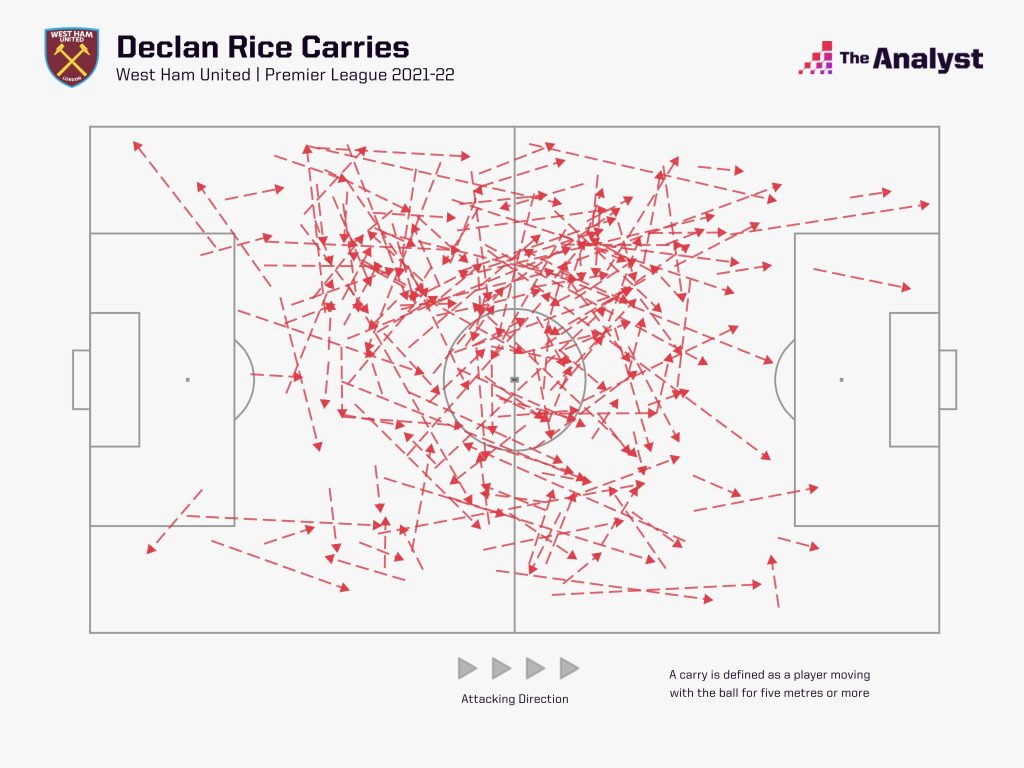
Rice has openly expressed he’s trying to improve the ball-carrying part of his game, and the numbers show this. Over the course of the last five season, his progressive carry numbers (dribbling the ball five metres or more up the field) have consistently increased.
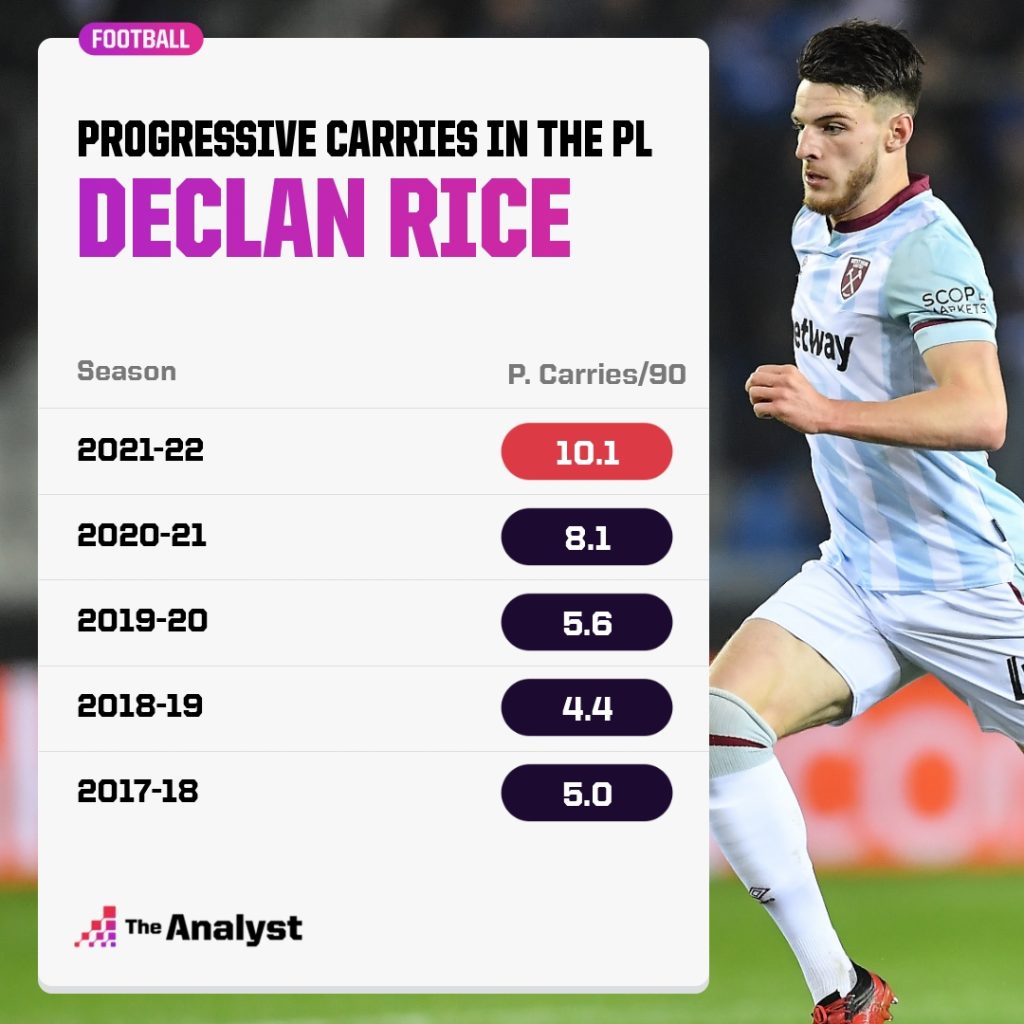
His progression in this facet of play has drawn plaudits from many. Last month, Roy Keane spoke about Rice’s talent and believes the midfielder is further ahead in his development as a player compared to himself at the same age.
Once the ball is in the final third, the tendency is again towards simplicity and traditional methods as West Ham swing crosses into the box. They attempt the third most from open play in the division (16.5 per game).
Variety and Reactivity
But although West Ham are characterised as playing lots of longer passes into the channels for Antonio, often via Pablo Fornals or Jarrod Bowen, perception is skewed by the fact most of their televised games are against top clubs like Liverpool or Manchester United:
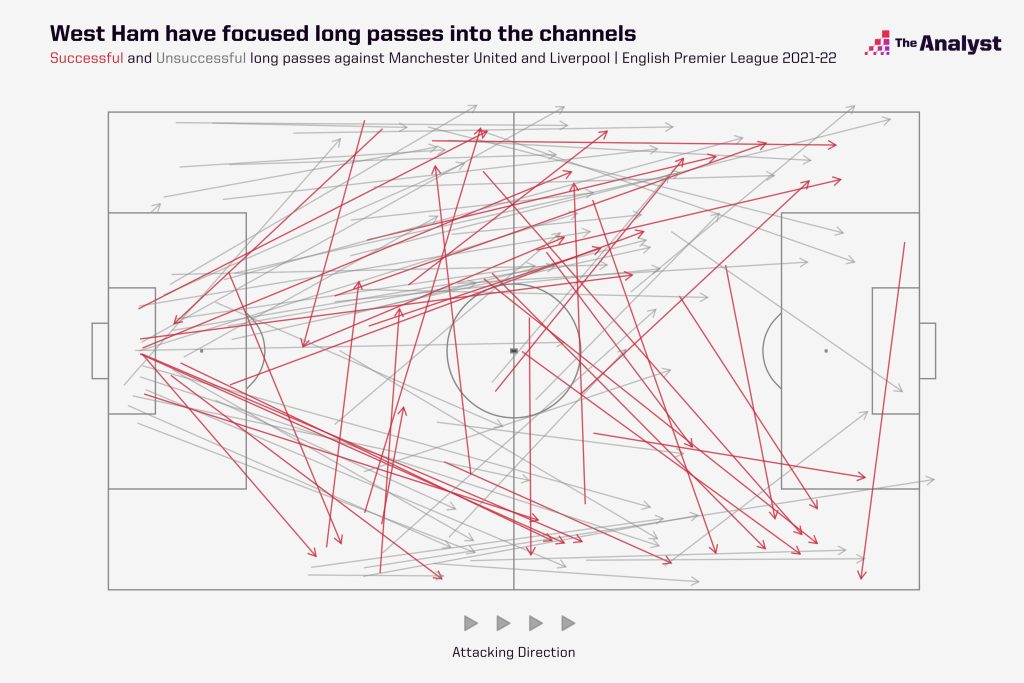
What really marks Moyes out is the variation in how his team play. He is a true reactive tactician, pouring over data to find opposition weaknesses and adapting his strategy accordingly, famous for covering every inch of wall space in his office with sticky notes during his Everton days. This malleability is best captured in the striking statistical differences between games this season.
Against Leeds United, his side had a PPDA of 22.9 but against Brentford it was 8.3, the former requiring a deeper line to prevent getting sucked into Marcelo Bielsa’s wild end-to-end football and the latter a calculated response to Brentford’s difficulty passing out from the back – as they like to do – at Premier League level. That’s a range of pressing that goes from the top 10% of recorded figures across the division this season to the bottom 10%.
We see a similarly dramatic swing elsewhere. For example, West Ham put together just four 10+ pass sequences in open play against Crystal Palace but 18 against Southampton. Very few clubs have such stark shifts in strategy between matches.
Slowly Moving up the Pitch
West Ham play backs-to-the-wall football, then, and in fact, there is evidence to suggest that as the choreography improves as the players grow in stature, Moyes’s tactics are opening up somewhat. They measure highly on a number of attacking statistics: they are fifth for passes into the final third, reflecting their propensity to dominate territorially for parts of the game, and rank eighth for possessions won in the final third, showing their willingness to press hard for a few seconds after the ball is lost.
A more telling measure of West Ham’s movement towards ball retention and a higher defensive line is their shift from last season. Their possession, passing accuracy in the opposition half, possession won in the final third, and shots from open play are all up significantly from the 2020-21 campaign, as the table below illustrates:
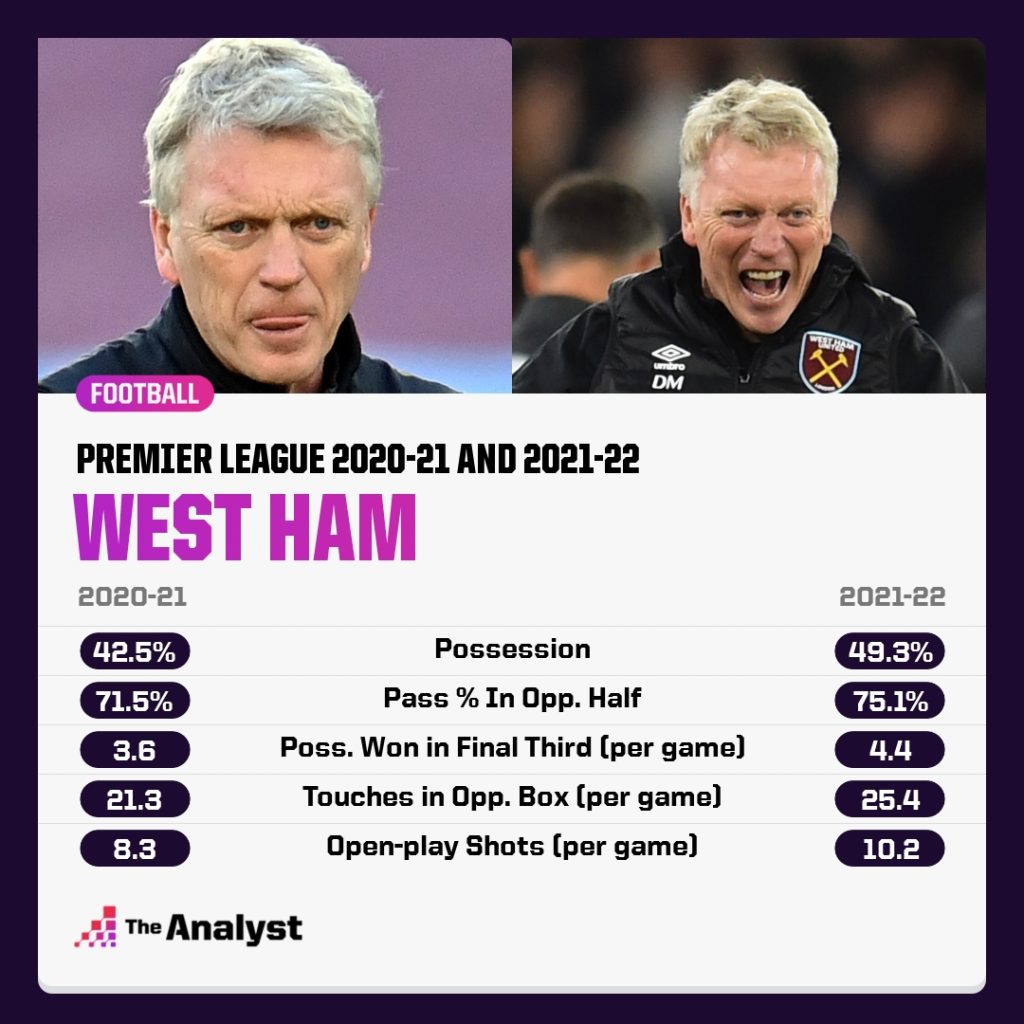
A lot of this work is led by the excellent pressing from the front we see from West Ham’s hard-working attackers, who may not be asked to counter-press regularly but who work tirelessly once the ball enters the middle third of the pitch. Pablo Fornals is second in the entire division for pressures, with 530, while Said Benrahma ranks 10th and Jarrod Bowen 35th.
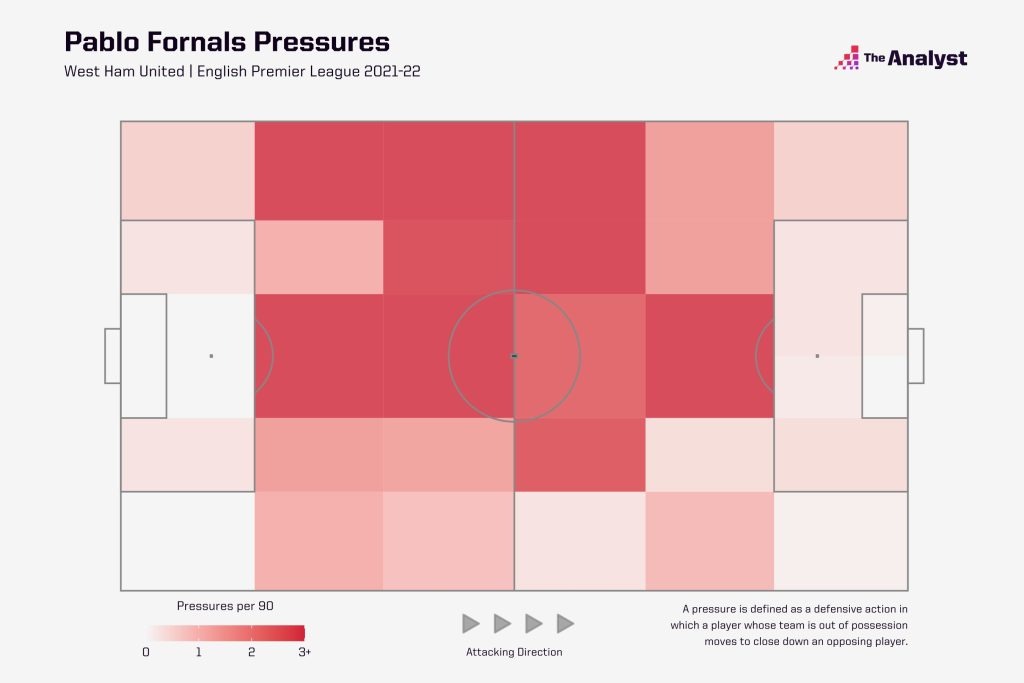
Set-pieces Skew Perceptions
But we shouldn’t get too carried away. West Ham are in a purple patch at the moment and it’s unlikely they will maintain it, given they have scored 23 goals from an xG of 19.2 and have the third best conversion rate in the division behind Chelsea and Liverpool (13.4%). It is hard to believe they will keep that up for an entire campaign.
West Ham’s secret weapon, and arguably the reason for their climb from Europa League hopefuls to top-four contenders, is their brilliant set-piece record. Moyes’ team have scored the second most set-piece goals (five), having topped the charts with 16 last season, and the underlying numbers are just as impressive: West Ham hit the second most successful corners into the box (22 so far), create the fourth most chances (13 in total), and have the third most players in the six-yard box when corners are delivered.
Which brings us full circle: to the winning goal, from a corner, against Liverpool and to a simple, old-school tactical strategy that has neutrals swooning over the retro feel of Moyes’ team.
Enjoy this? Subscribe to our mailing list to receive exclusive weekly content.
Banner design from Matt Sisneros.
